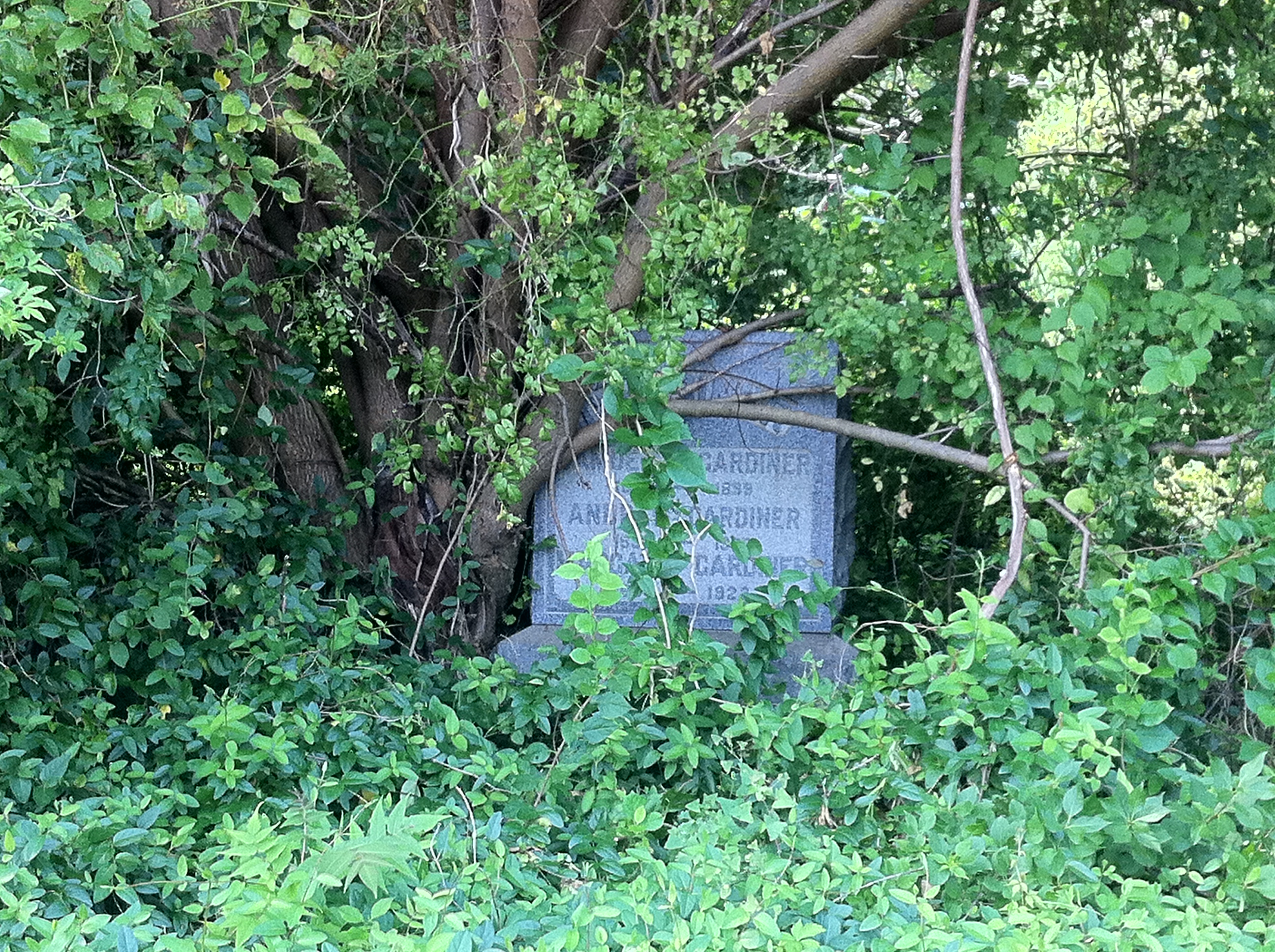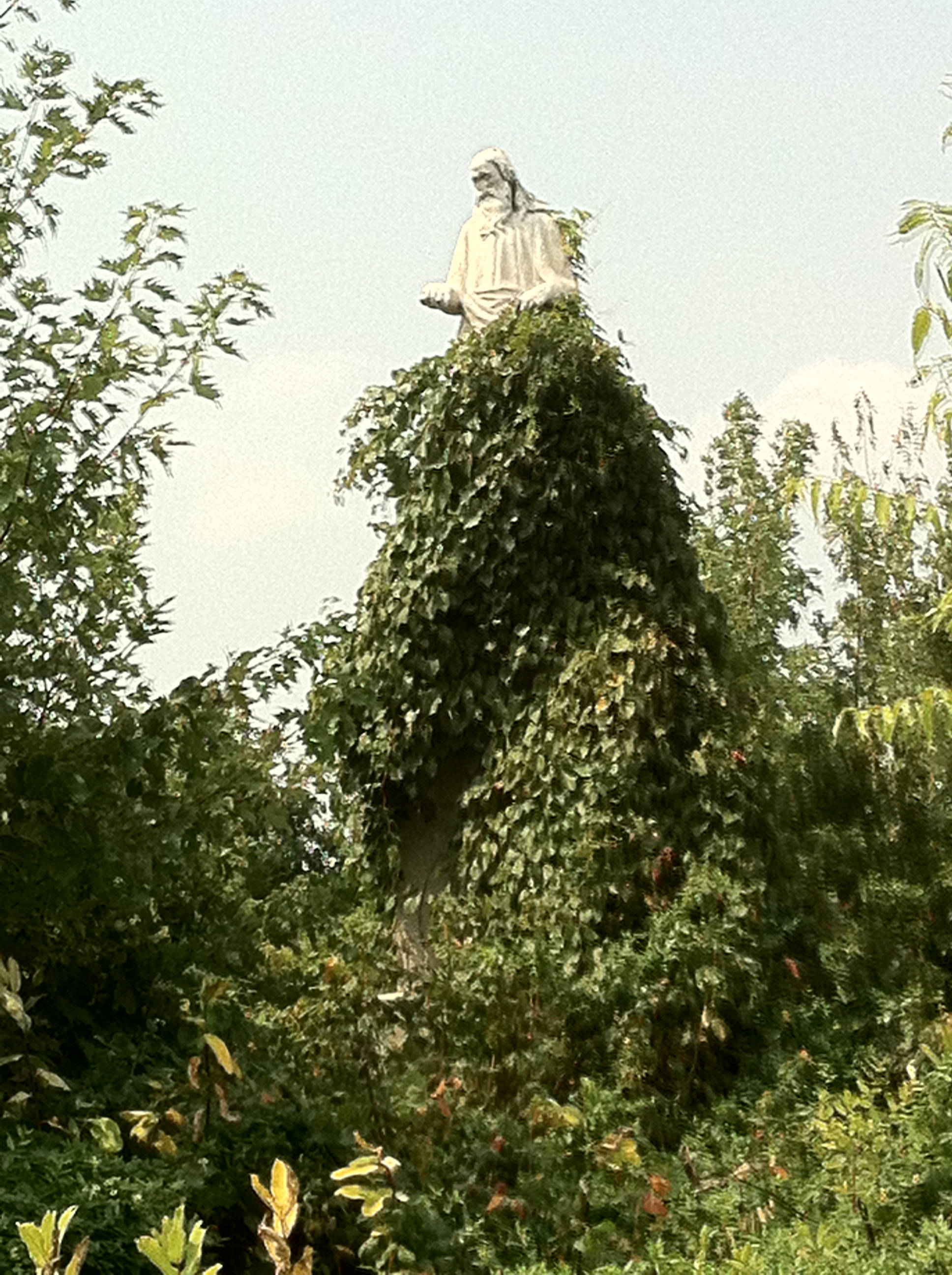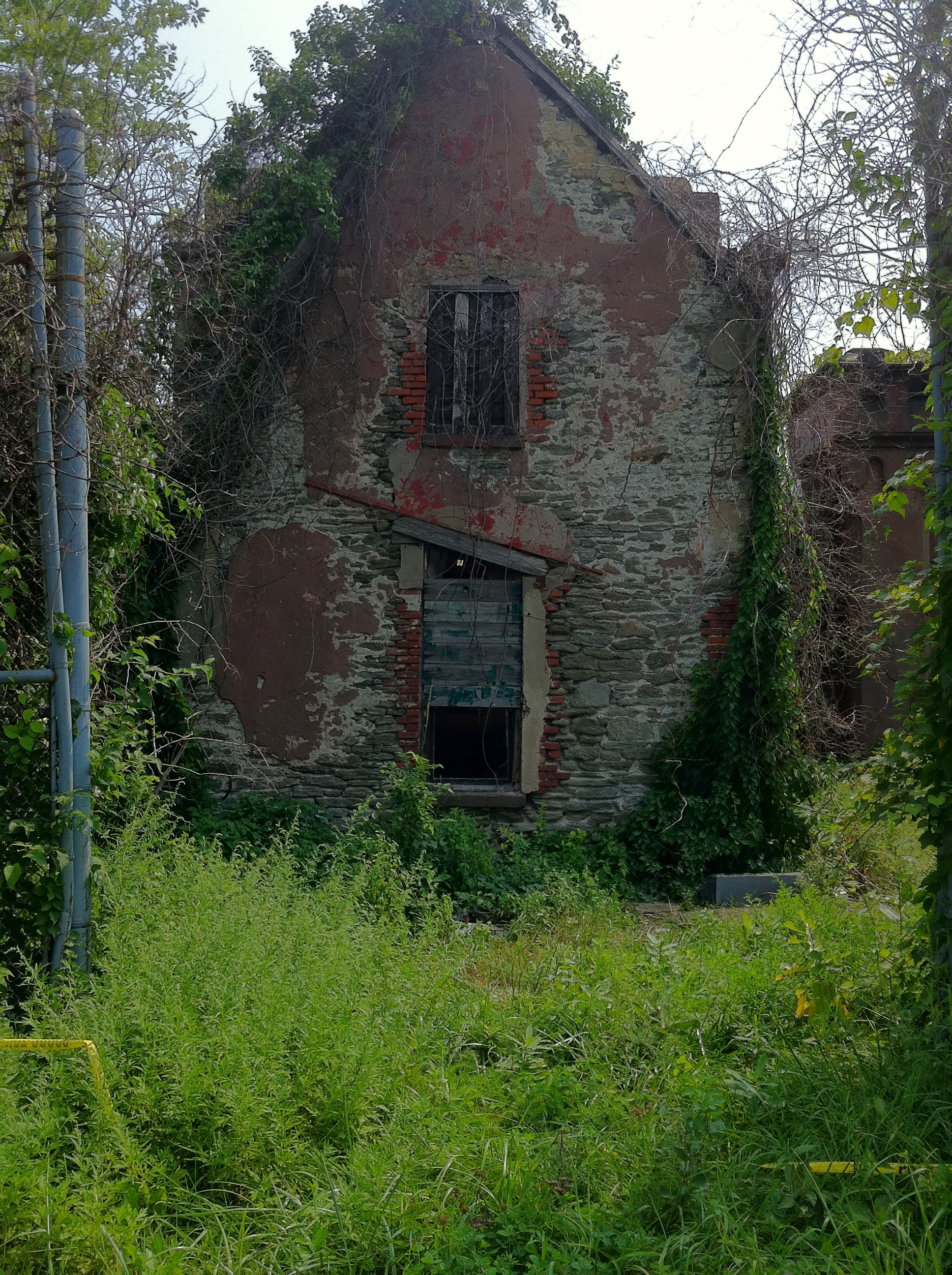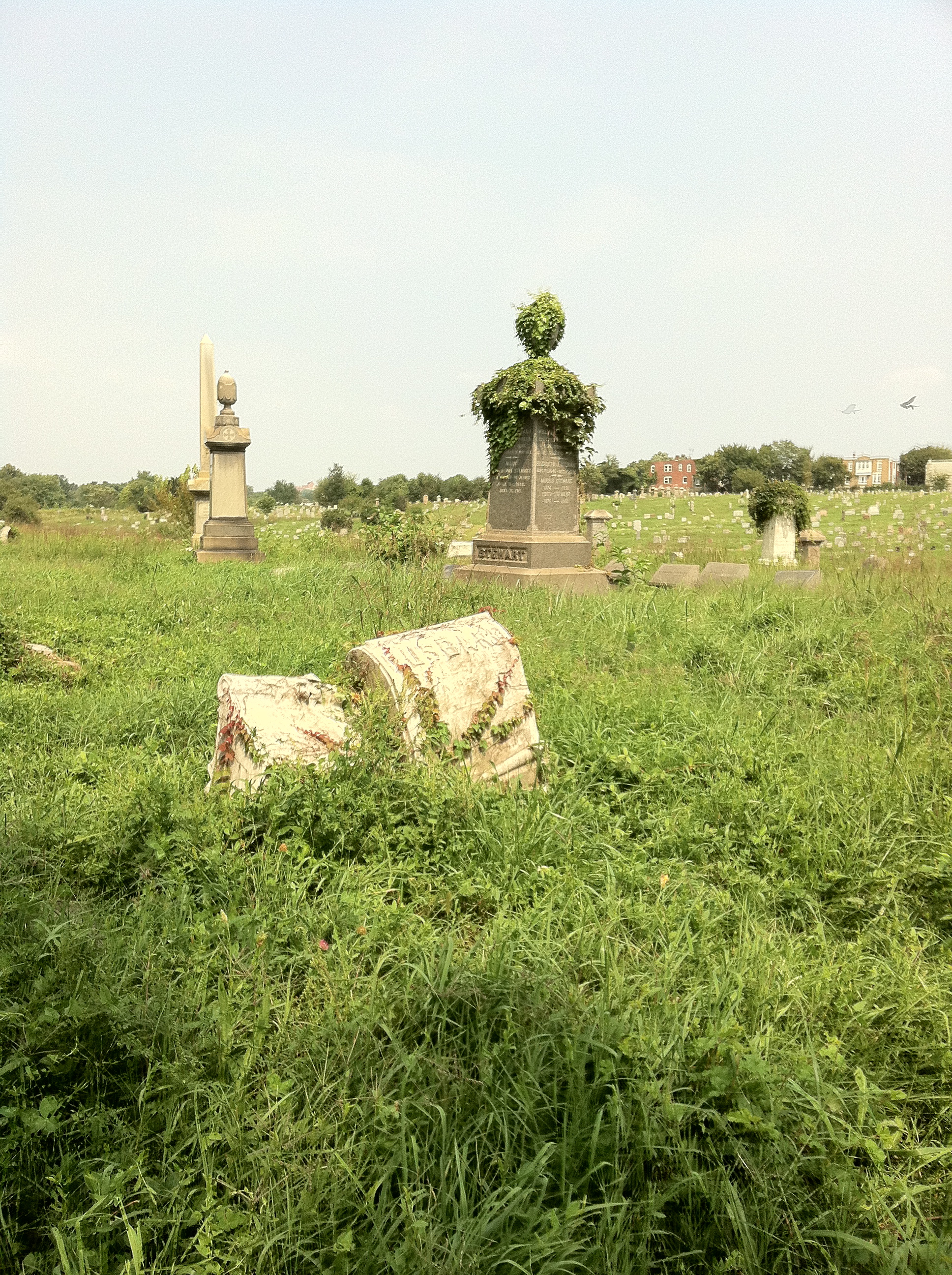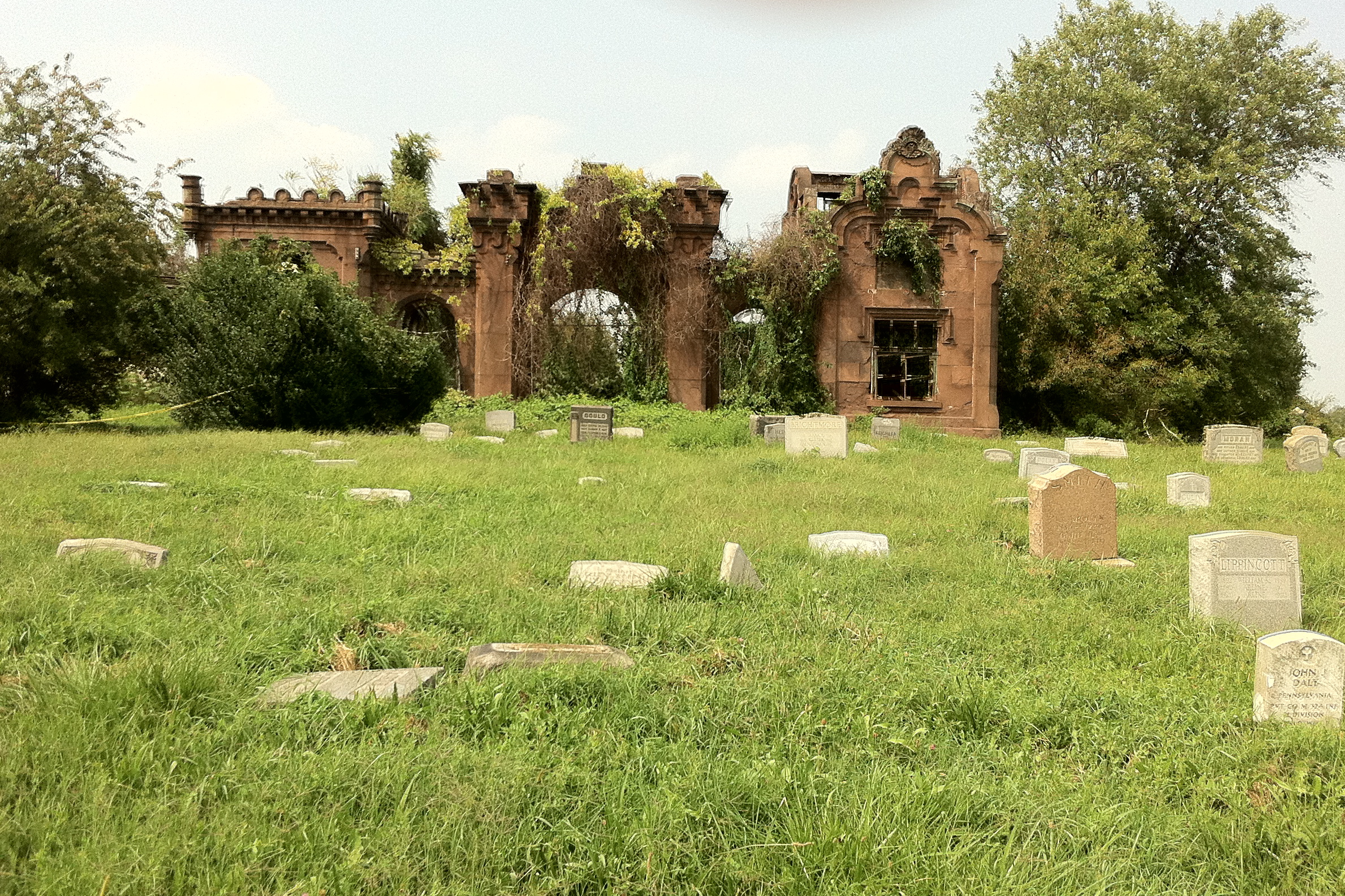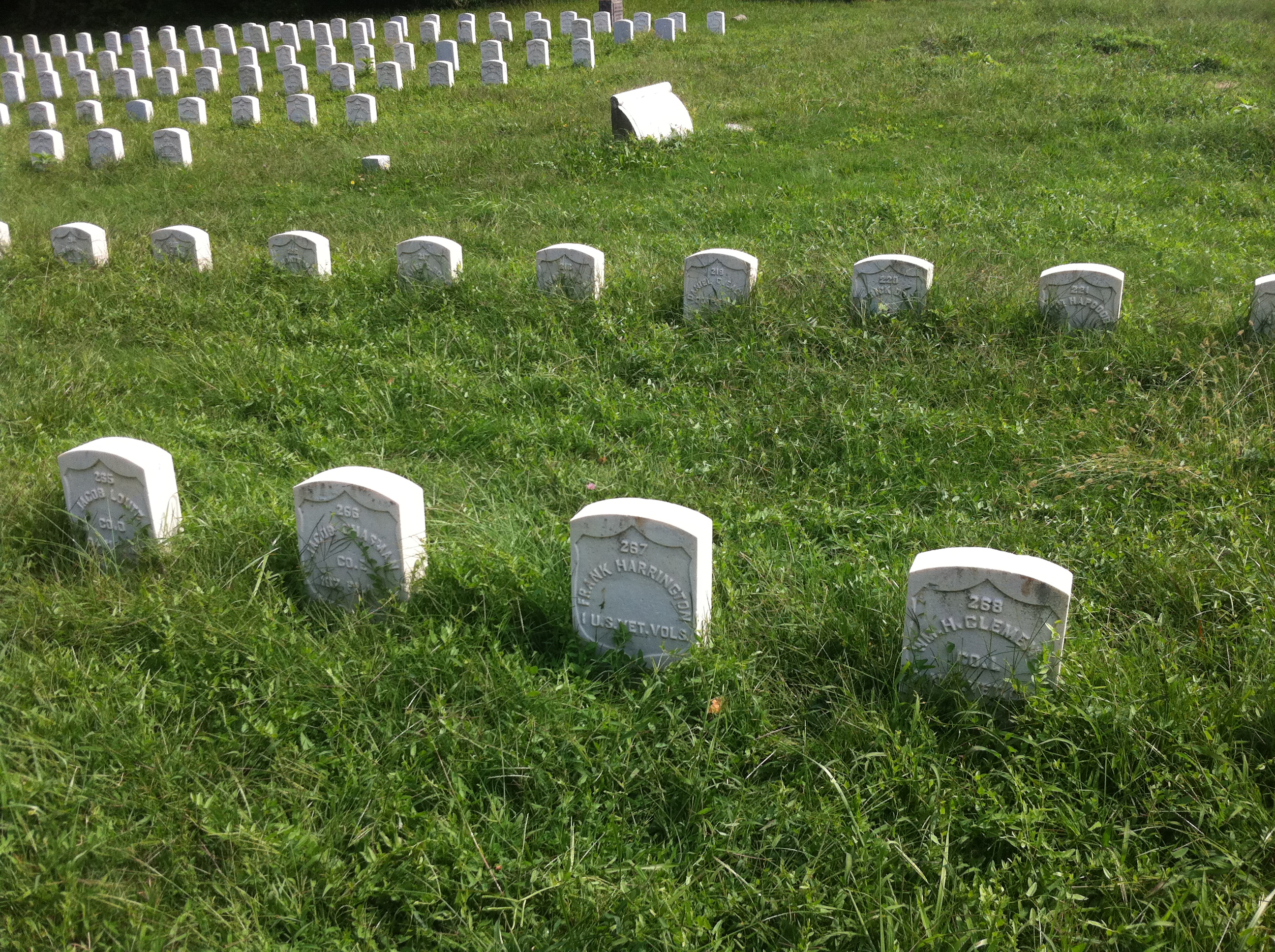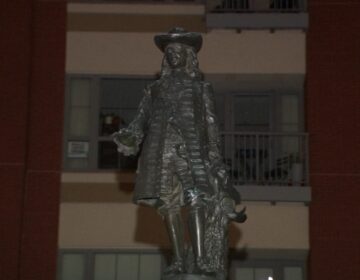Holding out hope for Mount Moriah Cemetery
On one recent Sunday afternoon, Mount Moriah Cemetery in Southwest Philadelphia was almost pastoral. Tidy rows of white stones, marking the graves of several hundred Civil War soldiers, gleamed in the sunshine, and green meadows spread as far as the eye could see, shot through with the bright colors of wildflowers and plastic bouquets.
Meandering along the winding paths, my companion and I were the sole visitors, accompanied only by the constant chirp of crickets that almost drowned out the sounds of passing traffic.
On closer inspection, though, our bucolic vision was disturbed by signs of deterioration that ranged from cracks and puddling in the pathways to overgrown grass and, as we forged further from the entryway, impassable weed trees that had grown to drape and strangle their way around gravestones. In one particular tangle, a sodden Atari box and a crushed bag of drywall lay slumped against the road, clearly long-standing garbage.
Its famed Romanesque entrance gate, designed by Stephen Decatur Button, sat crumbling in on itself, like a great ghostly relic. The whole place has a romantic air of neglect, the same that permeated a pre-restoration Eastern State Penitentiary 20 years ago. But the fact that this is a place that throbs with the memories of lives lived adds a special poignancy — and affront.
“Decent people understand that this is a sacred space that’s been violated,” says Leonard Reuter, who sits in on Historical Commission meetings and who, as assistant city solicitor, successfully fought to have the city granted temporary authority over the property’s Philadelphia portions. “When I walked through it recently with some L&I officials, they were visibly shaken.”
The cemetery remains open to the public, even though it officially ceased operations this past April, for the first time in its 150-year history. It now encompasses 380 acres, spanning Cobbs Creek and moving into the Borough of Yeadon in neighboring Delaware County. One of the largest and oldest cemeteries in the state, it’s long been the final resting place for prominent Philadelphians, such as Philadelphia’s mayor George Connell, and Israel Durham, a former owner of the Phillies.
Steps are falling into place to save the nationally-registered historic site. After Philadelphia Municipal Judge Bradley Moss declared the site a public nuisance in July, the city moved in and began cleanup. Just last week, State Representative Ronald Waters announced a plan to introduce legislation this month that will protect an entity willing to take over the cemetery’s operation.
Several nonprofit efforts have also gained steam. The Friends of Mt. Moriah has drawn hundreds of volunteers for two cleanups, with others set for Sept. 24 and Oct. 8.
“I grew up in Yeadon,” says Dan Callahan, the group’s 59-year-old president. “There was one street between me and the cemetery, and I remembering spending a lot of time there. Even then, it was in decline. But not like it is now.”
Callahan says his group was invigorated once the cemetery closed for business, because it no longer had to deal with the cloudy questions of who owned the place. That answer still remains unclear — the city is attempting to hold its last caretakers responsible, while emphasizing that it, for one, is not interested in taking ownership.
“We don’t have the resources to continue to devote to ongoing maintenance, nor are we in the business of running cemeteries,” says Brian Abernathy, chief of staff to the city’s managing director.
City officials and those in Yeadon — where more than half of the cemetery is located — are “actively working on figuring out who will take it,” continues Abernathy. “There are complicated issues: how do we structure the receivership, should it be a nonprofit, should it be transferred to a management company that specializes in the deathcare industry?”
Although the idea of turning the cemetery into a park has been batted around, city officials dismiss the notion. “It needs to be an operating cemetery — something that makes money to continue to give it the upkeep it needs and deserves,” says Abernathy.
Besides, adds Reuter, “there’s space for far more burials and, as it stands now, the rights of the citizens who have relatives buried there and who have pre-paid for future burials are being infringed.”
WHYY is your source for fact-based, in-depth journalism and information. As a nonprofit organization, we rely on financial support from readers like you. Please give today.



